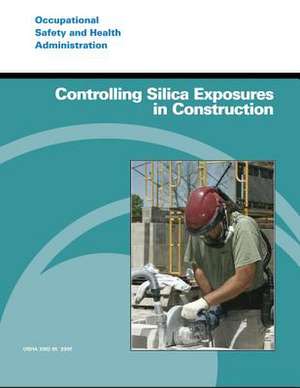Controlling Silica Exposures in Construction
Autor U. S. Department of Labor, Occupational Safety and Administrationen Limba Engleză Paperback
| Toate formatele și edițiile | Preț | Express |
|---|---|---|
| Paperback (2) | 96.37 lei 3-5 săpt. | |
| CREATESPACE – | 96.37 lei 3-5 săpt. | |
| CREATESPACE – | 106.23 lei 3-5 săpt. |
Preț: 96.37 lei
Nou
Puncte Express: 145
Preț estimativ în valută:
18.44€ • 19.34$ • 15.35£
18.44€ • 19.34$ • 15.35£
Carte disponibilă
Livrare economică 11-25 martie
Preluare comenzi: 021 569.72.76
Specificații
ISBN-13: 9781496082138
ISBN-10: 1496082133
Pagini: 72
Dimensiuni: 216 x 280 x 4 mm
Greutate: 0.19 kg
Editura: CREATESPACE
ISBN-10: 1496082133
Pagini: 72
Dimensiuni: 216 x 280 x 4 mm
Greutate: 0.19 kg
Editura: CREATESPACE
